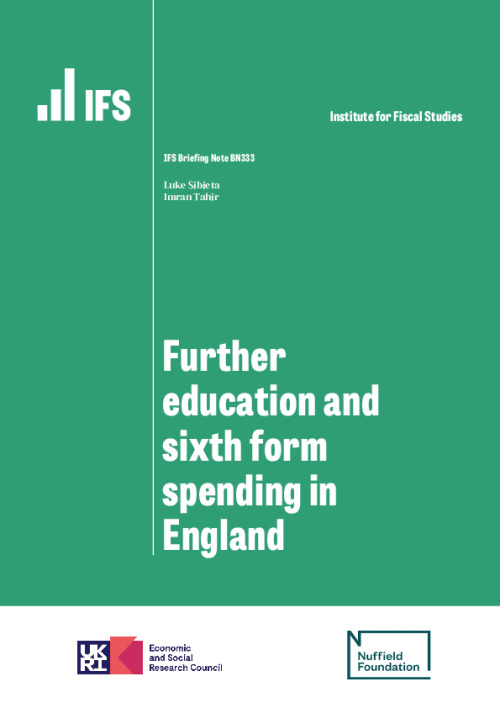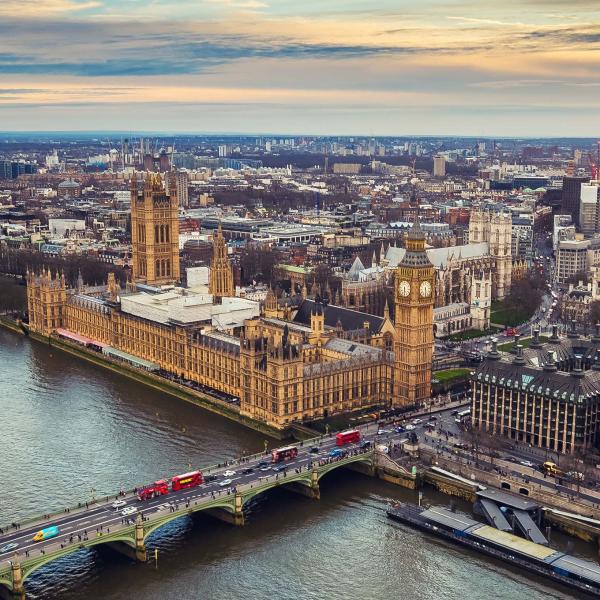Since the beginning of the COVID-19 pandemic, the entire education sector has faced a period of unprecedented challenge in seeking to provide remote lessons and support to students. In addition to these challenges, sixth forms and colleges are contending with a number of specific and long-running issues. A combination of long-term changes and higher GCSE results in 2020 means that the number of 16- and 17-year-olds in full-time education has increased to a historically high level. This has put pressure on spending and resources, which were already at relatively low levels following large cuts to spending per student over the previous decade.
In this note, we analyse how participation in and spending on 16–18 education have evolved over recent years. We document the long-term growth in the numbers of young people pursuing education after age 16. We then turn to assessing how spending levels in further education have changed in recent years. While the government allocated an additional £400 million to sixth forms and colleges in 2020–21, we show that the growth in student numbers means that this extra money only reverses a very small fraction of the cuts experienced over the last decade.
Key findings
- During the pandemic, the share of 16- and 17-year-olds in full-time education rose to a historical high of 85%. An unprecedented 68% of 16- and 17-year-olds in education studied for an A level or equivalent qualification, with a rise of 3 percentage points in 2020 alone. This reflects abnormally high GCSE results in 2020 and reduced opportunities outside of education. This pattern is likely to continue into 2021 given the further jump in GCSE results this year.
- Reflecting the constraints of the pandemic, the number of 16- and 17-year-old apprentices fell by 30% between 2019 and 2020. Only 3% of 16- and 17-year-olds took apprenticeships in 2020 and only 2% were in employer-funded training – both at their lowest levels since at least the 1980s.
- Colleges and sixth forms have seen the largest falls in per-pupil funding of any sector over the past decade. Funding per student aged 16–18 fell by over 11% in real terms between 2010–11 and 2020–21 in further education and sixth-form colleges, and by over 25% in school sixth forms.
- In the 2020–21 academic year, funding per student was lowest in school sixth forms (£5,000) and sixth-form colleges (£4,800). Funding was higher in further education colleges (£6,200), partly reflecting extra funding targeted at deprivation and complex, vocational programmes.
- The government allocated an extra £400 million to colleges and sixth forms in the 2020–21 financial year. With 5% growth in student numbers in 2020, this, at best, restores funding back to 2018–19 levels, leaving most of the cuts over the last decade in place.
- These spending changes will make it difficult for colleges and sixth forms to respond to students’ lost learning during the pandemic and a 17% expected rise in the number of 16- and 17-year-olds between 2019 and 2024. We calculate that an extra £570 million will be required by 2022–23 just to maintain spending per student in real terms from 2020–21 onwards.












